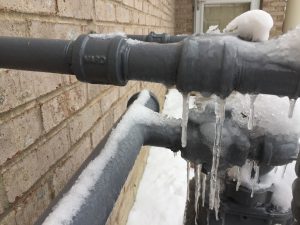Avoiding Frozen Pipes: Top Methods for Winter
Avoiding Frozen Pipes: Top Methods for Winter
Blog Article
Everybody maintains their personal thinking involving 6 Ways to Prevent Frozen Pipes.

Cold weather can wreak havoc on your plumbing, especially by freezing pipelines. Below's how to avoid it from happening and what to do if it does.
Intro
As temperature levels drop, the danger of icy pipes boosts, possibly causing pricey fixings and water damages. Understanding how to avoid icy pipelines is important for property owners in chilly environments.
Recognizing Icy Pipes
What creates pipelines to freeze?
Pipes ice up when exposed to temperatures below 32 ° F (0 ° C) for expanded durations. As water inside the pipelines freezes, it increases, taxing the pipe wall surfaces and potentially creating them to break.
Dangers and damages
Frozen pipelines can cause water disruptions, residential property damages, and expensive fixings. Ruptured pipes can flood homes and cause extensive architectural damages.
Signs of Frozen Pipeline
Determining frozen pipelines early can avoid them from bursting.
Just how to determine frozen pipelines
Look for lowered water flow from taps, uncommon odors or sounds from pipelines, and noticeable frost on subjected pipes.
Avoidance Tips
Protecting vulnerable pipes
Wrap pipes in insulation sleeves or make use of heat tape to shield them from freezing temperatures. Focus on pipes in unheated or outside locations of the home.
Home heating techniques
Keep indoor areas properly heated up, particularly locations with pipes. Open up cabinet doors to allow warm air to flow around pipelines under sinks.
Protecting Exterior Pipes
Yard pipes and outside faucets
Separate and drain pipes garden hose pipes before winter. Install frost-proof faucets or cover outside faucets with shielded caps.
What to Do If Your Pipes Freeze
Immediate actions to take
If you believe icy pipes, maintain faucets open up to eliminate stress as the ice melts. Utilize a hairdryer or towels taken in hot water to thaw pipelines slowly.
Long-Term Solutions
Structural modifications
Consider rerouting pipelines away from outside walls or unheated locations. Include additional insulation to attic rooms, basements, and crawl spaces.
Upgrading insulation
Purchase premium insulation for pipelines, attics, and walls. Appropriate insulation assists preserve regular temperatures and reduces the danger of icy pipelines.
Final thought
Protecting against frozen pipes requires proactive actions and fast actions. By comprehending the reasons, indicators, and preventive measures, property owners can safeguard their plumbing throughout cold weather.
5 Ways to Prevent Frozen Pipes
Drain Outdoor Faucets and Disconnect Hoses
First, close the shut-off valve that controls the flow of water in the pipe to your outdoor faucet. Then, head outside to disconnect and drain your hose and open the outdoor faucet to allow the water to completely drain out of the line. Turn off the faucet when done. Finally, head back to the shut-off valve and drain the remaining water inside the pipe into a bucket or container. Additionally, if you have a home irrigation system, you should consider hiring an expert to clear the system of water each year.
Insulate Pipes
One of the best and most cost-effective methods for preventing frozen water pipes is to wrap your pipes with insulation. This is especially important for areas in your home that aren’t exposed to heat, such as an attic. We suggest using foam sleeves, which can typically be found at your local hardware store.
Keep Heat Running at 65
Your pipes are located inside your walls, and the temperature there is much colder than the rest of the house. To prevent your pipes from freezing, The Insurance Information Institute suggests that you keep your home heated to at least 65 degrees, even when traveling. You may want to invest in smart devices that can keep an eye on the temperature in your home while you’re away.
Leave Water Dripping
Moving water — even a small trickle — can prevent ice from forming inside your pipes. When freezing temps are imminent, start a drip of water from all faucets that serve exposed pipes. Leaving a few faucets running will also help relieve pressure inside the pipes and help prevent a rupture if the water inside freezes.
Open Cupboard Doors
Warm your kitchen and bathroom pipes by opening cupboards and vanities. You should also leave your interior doors ajar to help warm air circulate evenly throughout your home.

Do you like more info about Preventing and dealing with frozen pipes? Place a remark down the page. We would be pleased to listen to your suggestions about this piece. We hope to see you back again in the future. So long as you enjoyed reading our post kindly be sure to share it. I am grateful for your time. Please check up our website back soon.
Click Report this page